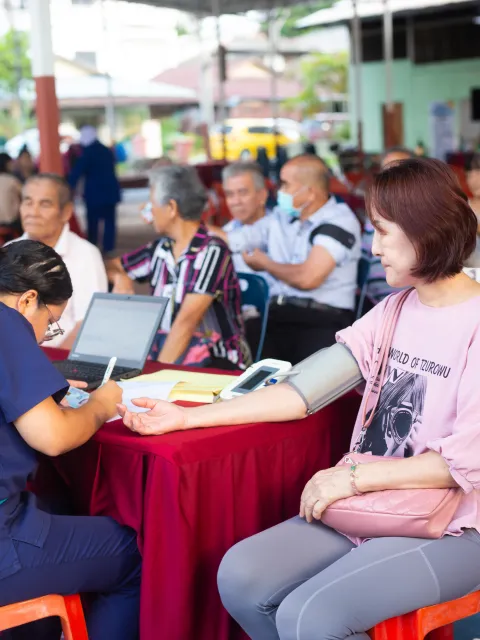Equitable outcomes for people with breast cancer through patient navigation

Breast cancer is the most common cancer in women worldwide. In 2020, it was estimated that more than 2 million new cases of breast cancer were diagnosed, and more than 680,000 breast cancer deaths occurred globally (Globocan 2020).
The global burden of breast cancer is not felt equally among countries around the world, however, nor is the experience of breast cancer the same within a country’s borders. In the United States, Black women are about 40% more likely to die of breast cancer compared to white women. Women with lower socioeconomic status, those living in rural areas, and those from historically marginalised communities are more likely to be diagnosed at a later stage or have delayed access to treatment, which contributes to worse outcomes compared to white women.
The path to breast cancer care is daunting and complex under the best of circumstances, but it is further complicated for historically marginalised and/or excluded populations who experience significant barriers throughout the continuum of care.
Evidence shows that patient navigation is effective in overcoming some of these barriers and reducing inequities by helping women receive more timely diagnostic resolution after a breast cancer screening abnormality, initiate treatment sooner and improve their quality of life after a cancer diagnosis.
In a meta-analysis of patient navigation studies, it was found that participants receiving navigation services were 32% more likely to receive breast cancer screening compared to control groups. Additional studies have also demonstrated patient navigation reduces time to diagnostic resolution following an abnormal mammogram across racial and ethnic backgrounds.
The challenges to navigating the healthcare system don’t stop when a person has reached a diagnosis. Breast cancer patients engage with, on average, 15 different physicians and more than 90 additional health care employees over the course of their cancer treatment. With the complexity of breast cancer care and the complex nature of the US health care system, patient navigation is an invaluable resource to help and support breast cancer patients.
There are many models of patient navigation, including medical navigation provided by nurses and other professionals at the health care setting and community-based navigation offered by lay patient navigators. Community-based navigation can be a powerful tool to help educate patients on their options, including clinical trials, as well as connect them with local support resources.
While the literature overwhelmingly supports patient navigation as an economical and effective method to achieve health equity and improve outcomes, patient navigation is not ubiquitously offered at health care systems throughout the world. In the US, while many health care systems are beginning to offer in-house navigation services, access to these navigation services is not always equitable.
Fragmented healthcare systems and lack of financial support are among the policy issues preventing widespread implementation of patient navigation.
To fill this void in accessible, community-based navigation and work to achieve health equity, Komen created its virtual Komen Patient Care Center (PCC), which is built on a foundation of health equity and ensures all people can access the personalised care and support they need.
In the past year alone, Komen’s patient navigators delivered 45,000 services, including calls, emails, navigation services, and financial assistance, to nearly 38,000 individuals, addressing over 56,000 barriers to care. The PCC’s data reinforces the efficacy of an easily accessible bilingual telehealth model, as it effectively reaches out to the most vulnerable populations, particularly those who lack access to navigation services.
However, patient navigation is an emerging field without enough trained navigators equipped to remove barriers to care and who reflect the diverse lived experiences of breast cancer patients. Komen’s Patient Navigation Training Community addresses these issues as a workforce development programme that prioritises the recruitment of navigator trainees from diverse backgrounds and trains all navigators to assist and remove barriers to care for patients of varying backgrounds, cultures, races and ethnicities living in underserved communities. This training improves core competencies for navigators, increases racial and cultural diversity among trainees to support a more diverse patient navigation workforce, and creates a sustainable learning and support community for navigators.
While the programme was developed in the United States, this training is available at no cost to any individual, in any country, interested in learning the skills of navigation.
Last update
Tuesday 31 October 2023Share this page


